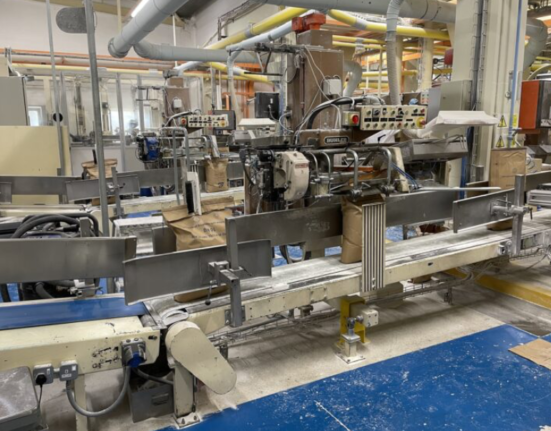Debt investors face two major challenges: interest rate risk and credit risk. Given the current political and economic landscape, it would be understandable to be nervous about both. However, for savvy investors there are still opportunities in this esoteric sector.
Interest rate risk (the risk that your investment falls in value due to the inverse relationship between bond prices and base rates) is currently the lesser of the two evils, despite alarm in the bond market. This is because of the type of debt investments held in these funds.
Debt investment trusts, focused on the direct lending and structured finance sub sectors, tend to lend money at floating interest rates – meaning the income they receive adjusts according to changes in underlying rates. Traditional bond funds typically invest in assets with fixed interest rates, albeit they can mitigate their own exposure to interest rate risks by holding shorter-duration bonds whose value is less affected by interest rates.
However, the possibility of a global slowdown or recession means credit risk (the risk of loan defaults) is on the rise for both debt and traditional bond fund investors. To combat this, investors need to think carefully about the quality of the debt held by these funds.
While poorer quality debt comes with higher yields to compensate, it does increase the likelihood of defaults if we enter a recession. If you want to play it safe, look for funds with experienced credit teams, who have positioned themselves more defensively with holdings such as senior secured debt – which pays out ahead of other creditors in a worst-case scenario where an issuer collapses.
Direct lending
Many debt trusts focus on private credit – lending directly to (usually unlisted) businesses. In this category, Biopharma Credit (BPCR) is a popular choice among analysts, with Matthew Read, senior research analyst at QuotedData, describing the trust as “a well-oiled machine”. It focuses exclusively on the life sciences industry, targeting mid to late-stage businesses, whose portfolios tend to contain approved drugs rather than those still going through the trial process. Top investments in the portfolio include Collegium (26 per cent), which focuses primarily on pain management drugs, and Insmed (21 per cent), which specialises in rare, under-researched diseases.
As drug development is a high-risk endeavour, the yields on these investments tend to be high to compensate for the additional risk. Currently, the trust itself has a dividend yield of 8.2 per cent.
However, it is trading at a sizeable 13.7 per cent discount to net asset value (NAV), due in part to a previous loan default by one of its borrowers, LumiraDx (US:LMDX). “It recovered 70 per cent of that loan, which is a testament to the terms and conditions the team put in their loans,” notes Mick Gilligan, head of managed portfolio services at Killik & Co. Investors should also be aware that the trust’s lending is conducted on a US dollar basis, although “at the moment the discount makes up for the FX risk”, Gilligan argues.
GCP Asset Backed Income (GABI), is another option in this space. The trust, which trades on a hefty -21.6 per cent discount, is in a managed wind-down process, and is offering a dividend yield of 9.8 per cent. Its investments are secured against either contracted cash flows or physical assets, in areas it deems integral to society. These include social housing, supported living and care homes.
Read more from Investors’ Chronicle
Loans and bonds
An alternative way to access the debt space is M&G Credit Income (MGCI). It invests in a range of public as well as private debt, and 70 per cent of its holdings must be ‘investment grade’ (ie of a higher credit quality) at any one time.
It takes a multisector approach, investing in everything from real estate, banking, mortgage-backed securities and life insurance to restaurants and pharmaceuticals. Currently its yield is 8.9 per cent, compared with a sector average of 8.2 per cent.
“The fund does not tend to gear, and because of that the M&G brand is less likely to take the kind of risks its peer group takes,” Gilligan says. It has no gearing at present, compared with an AIC sector average of 4 per cent.
Further along the risk spectrum is Invesco Bond Income Plus (BIPS), which has a 7.2 per cent yield and is trading at a premium of 1.7 per cent. Its portfolio includes a mixture of government bond, investment-grade debt and high-yielding corporate bonds, with an emphasis on higher yielders.
If you are willing to take on more risk still, the CQS New City High Yield Fund (NCYF) could be a good option. The trust invests in high-yielding fixed-interest securities. As these holdings tend not to be investment-grade, they are higher risk, but you do receive a yield premium. Reed says: “The team is very good at buying unrated assets where the issue size is a bit too small to warrant getting a rating. They are very good at breaking that down and working out what the rating should be themselves.”
This approach has paid off and the trust exceeds its peers in terms of yield, which currently stands at 9 per cent. The AIC subsector averaged for loans and bonds is 8.2 per cent. The trust has also enjoyed 17 consecutive years of dividend increases.
Structured finance
Structured finance trusts tend to be relatively small and illiquid, which is worth bearing in mind if you are interested in investing in the sector. However, there are some attractive options if you wish to proceed. The TwentyFour Income Fund (TFIF), for example, has a 10.4 per cent dividend yield, and is trading at a discount of just 0.5 per cent. Unlike most trusts in the field, it pays a monthly income rather than providing a quarterly payment, making it a popular choice for income investors.
Structured finance trusts often invest in more complex debt instruments. Around half of the portfolio is in mortgage-backed securities (MBS), which may ring alarm bells for investors, given their involvement in the financial crisis. However, Reed cautions that as these are European based securities, they are less risky than their US counterparts. Thanks to regulatory requirements, European lenders must keep more skin in the game when it comes to MBSs.
Alternatively, there is Fair Oaks Income 2021 (FAIR), which has an even higher yield of 15.3 per cent. The trust offers exposure to US and European collateralised loan obligations (CLOs).
However, keep in mind that while the trust’s yield is high, the credit quality of the majority of its debt investments is poor. Over half are B or BB rated, meaning they are so called ‘junk’ bonds, and are therefore a much riskier proposition. In the event of a recession, companies ranked at this level are far more likely to default than those that have investment-grade debts.
| How debt trusts compare | |||
|---|---|---|---|
| Trust | AIC debt sector | Share price dividend yield (%) | Premium/discount (-) to NAV (%) |
| BioPharma Credit (BPCR) | Direct Lending | 8.2 | -13.7 |
| GCP Asset Backed Income (GABI) | Direct Lending | 9.8 | -21.6 |
| M&G Credit Income (MGCI) | Loans & Bonds | 8.9 | 3 |
| Invesco Bond Income Plus (BIPS) | Loans & Bonds | 7.2 | 1.7 |
| CQS New City High Yield Fund (NCYF) | Loans & Bonds | 9 | 6.9 |
| TwentyFour Income Fund (TFIF) | Structured Finance | 10.4 | 0.5 |
| Fair Oaks Income 2021 (FAIR) | Structured Finance | 15.3 | -3.8 |
| Source: FE |







